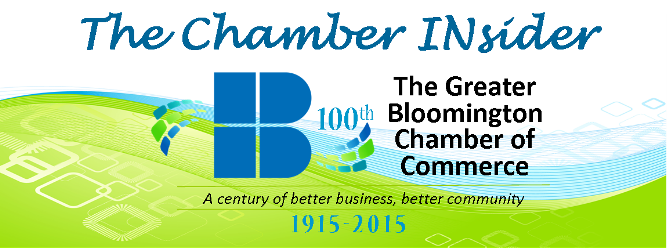Bloomington Chamber’s Graduation Coach Program Receives $120,000 Aspire Contribution from AT&T
The Franklin Initiative Only Indiana Organization Among 47 Recipients Nationwide to Share in $10 Million to Help Stem the High School Dropout Crisis
AT&T Inc. (NYSE:T) announced a $120,000 grant to support the Graduation Coach Initiative, a program of the Greater Bloomington Chamber of Commerce’s Franklin Initiative in September. The Graduation Coach Initiative provides individualized counseling and career preparation for struggling students to increase the graduation rate in Monroe County.
 Because of its solid record of proven results, The Chamber’s Franklin Initiative was selected from thousands of applicants nationwide as one of 47 schools and non-profits to receive Aspire funding. Applicants were evaluated based on their accomplishments in serving students at risk of dropping out of high school and their ability to use data to demonstrate the effectiveness of their work. This is the second grant from AT&T’s Aspire program, having received a $200,000 grant from the program in 2008.
Because of its solid record of proven results, The Chamber’s Franklin Initiative was selected from thousands of applicants nationwide as one of 47 schools and non-profits to receive Aspire funding. Applicants were evaluated based on their accomplishments in serving students at risk of dropping out of high school and their ability to use data to demonstrate the effectiveness of their work. This is the second grant from AT&T’s Aspire program, having received a $200,000 grant from the program in 2008.
“Since the Graduation Coach Initiative was introduced in 2007, nearly 1,000 young people have benefited from the one-on-one mentoring while hundreds, who would have otherwise dropped-out, earned their high school diploma,” said Cindy Kinnarney, Chair of the Chamber’s Franklin Initiative Advisory Council. “We applaud AT&T for their leadership in finding solutions to the high school dropout crisis. We are grateful for their generous support of a program that has far-reaching benefits.”
Graduation Coaches are social work professionals employed by The Chamber’s Franklin Initiative who work intensively with a caseload of 30-60 at-risk students with low GPA’s, low credit attainment, or poor attendance. There are three full-time Graduation Coaches – one at Bloomington High School North, Bloomington High School South, and Edgewood High School in Ellettsville – who are onsite to help students stay in school and graduate by providing focused support and removing barriers to academic success.
“Keeping our teenagers in high school and preparing them for success after graduation benefits our students and our communities,” said George Fleetwood, President of AT&T Indiana. “The Chamber’s Franklin Initiative and its Graduation Coach Program have a proven graduation strategy that is helping at-risk youth stay in school and succeed academically. We are proud to continue our support of this program.”
Since 1999, the Chamber’s Franklin Initiative (FI) has helped to facilitate career awareness while helping students develop the skills necessary to succeed in employment or in continuing education. FI programs such as the Reality Store, career fairs, and job shadowing increase student engagement through real-world connections, as well as provide the critical link between the education and business communities. Students who drop out of high school are almost twice as likely to be unemployed than high school graduates and they earn far less money. Studies also cite those that drop out are eight times as likely to be incarcerated, and far more likely to require public assistance such as housing subsidies, food stamps, and utility assistance.
“The benefits of increasing high school graduation rates are significant for our community. Thanks to AT&T’s support, we can continue the positive momentum,” added Kinnarney. After a rigorous and competitive process, The Chamber’s Franklin Initiative was identified as making a real difference in their community by supporting and motivating traditionally underserved students to stay in school, graduate and prepare for the next step in life. To learn more about all of the organizations selected, please visit www.att.com/local-impact.
 without detailing possible barriers a business might find itself in a rut before it even has moved forward.
without detailing possible barriers a business might find itself in a rut before it even has moved forward.







